Our test: advantages and disadvantages of baking paper, silicone baking mats or – baking on the tray directly.
Whether you bake cookies or cheese toast in the oven – everyone wants to get perfect results, but later do not want to spend hours scrubbing trays. Therefore, everyone almost automatically uses a piece of parchment paper when baking. But is it sustainable? Are there cheap alternatives that work just as well in the kitchen? A friend asked us this the other day and we found the topic so interesting that we want to share our findings and experiences with you. For this article, we compared baking paper, silicone mats and similar tools.
As you know, we are not paid or sponsored. When we express opinions, it is only about our personal experiences. Therefore, our articles on products and tools are not meant to be a recommendation to purchase whatsoever. Just read what we have to say and then decide for yourself.

Baking paper
Baking or parchment paper is inexpensive and easy to use. However, it is a single-use product; it is rare that it can be used a second time. Baking paper can be especially handy if, for example, you want to prepare several batches of cookies and do not have enough trays or substitutes.
As far as functionality is concerned: Basically, all typical commercially available baking papers deliver what they promise. The paper prevents sticking to the baking tray and makes it relatively easy to remove even fragile pastries such as macarons.
Baking paper is available in rolls or cut to sheet size. We think using pre-cuts is a real advantage. It’s annoying to have to measure and cut first when things get hot in the kitchen. Baking paper that is larger than a sheet is rarely if ever needed anyway.
The most expensive suppliers in Germany advertise a non-slip bottom – the paper is slightly nubbed on one side. A piece of “non-slip” paper costs about 12 euro cents per sheet. Strictly speaking, however, the nubs are not worth it in our opinion, because you can easily avoid slipping in other ways. Our tip: Splash a bit of water on the baking tray and place the paper directly on it – then it will stay where it is supposed to by itself.
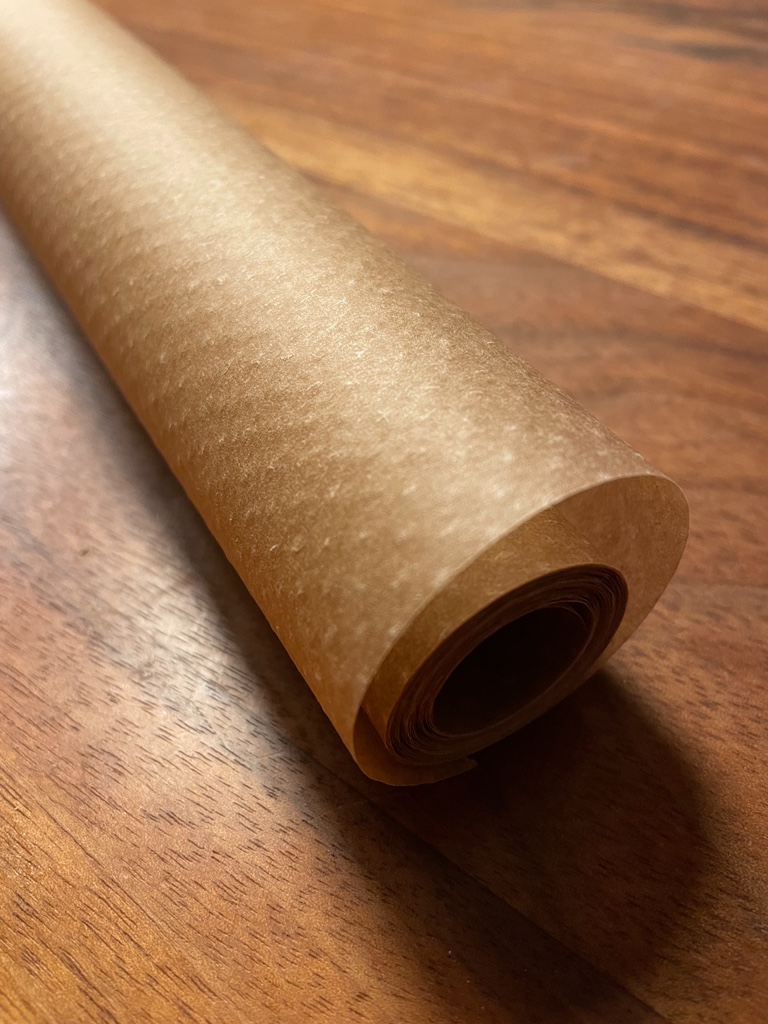
Cheaper products from the drugstore or discounter often differ significantly in the thickness of the paper. If the paper is too thin, you should really make sure that it lies flat. In a very hot oven, the paper likes to burn if one corner doesn’t lay well. If the grill is on, it may even cause the paper to catch fire.
The price of the cheap products is from 4 to 6 euro cents per sheet. Actually, the best baking paper we know of is a brand sold at the discounter for 6 euro cents per sheet. It’s sturdy enough to stay put, and you can use it twice if need be.
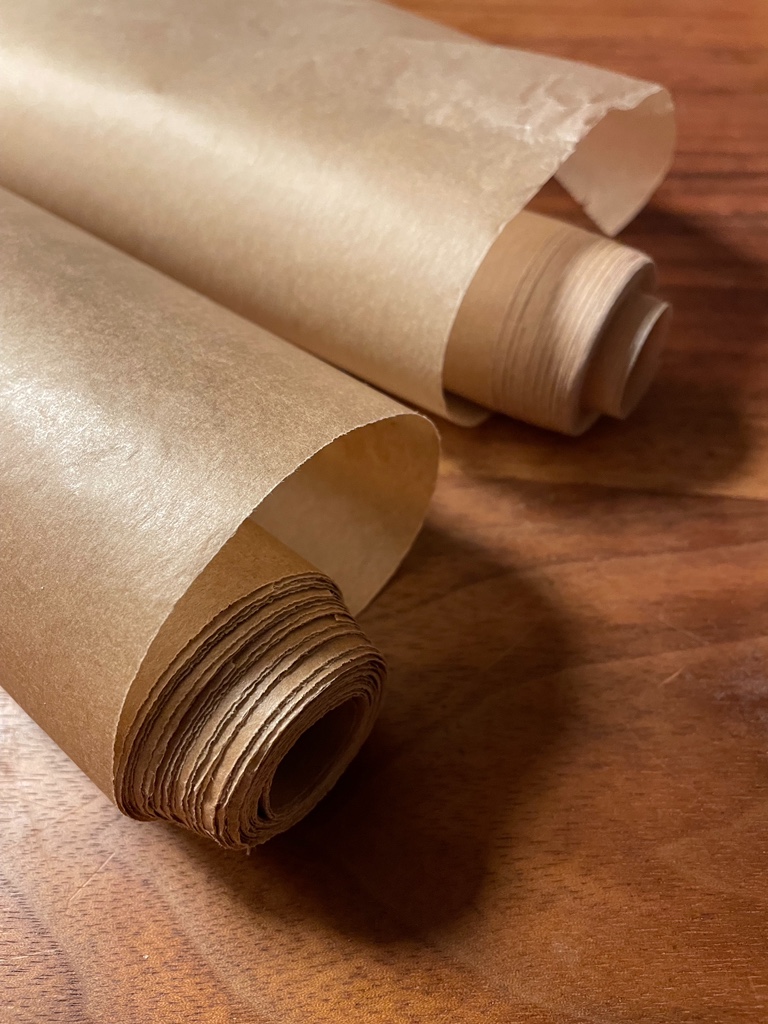
But now comes the catch. Unfortunately, (almost) all baking paper has ecological drawbacks, even though the typical manufacturers in Germany often actively advertise that it is “compostable” and made of recycled material. This is basically true, but what is true as well is that common baking paper is not biodegradable. That’s because the only reason baking paper doesn’t stick to pastries is because it’s coated with silicone.
Silicone is an interesting substance, a real “all-rounder”. It is not made from petroleum like other plastics, but from silicon, and it does not need harmful plasticizers – therefore it is considered harmless to health. Silicone is UV resistant, it can withstand heat and cold, overall it is a very durable product. Logically, however, this also means that products made of silicone are harmful to the environment precisely because they are so durable and long-lasting. So baking paper doesn’t belong in the compost heap. Even in waste incineration, silicone products cause problems. Apart from the fact that their production also requires a lot of energy and water, the same applies as with all disposable products: It’s better not to use them if you can do without them.
There are now a few manufacturers in Germany who have developed silicone-free baking paper, which we think is a good idea. However, the manufacturers themselves point out that this baking paper only does not stick if it is additionally greased. We find that in this case the use of baking paper hardly brings any advantages over a greased tray, which in turn causes no waste at all. For the sake of completeness, we should mention that the silicone-free paper costs about 15 euro cents per piece / per tray.
Our conclusion on baking paper: the silicone-coated baking papers of the popular brands all do their job and the price seems sensible. Unfortunately, however, they are not biodegradable. Personally, we think that paper without a coating is a laudable development, but has rather few advantages. We prefer to grease the tray – more about this below.
Silicone mats
Silicone mats have many advantages over baking paper and are therefore a serious alternative. Unlike the disposable products, they are extremely reusable and even recyclable. You can also clean them in the dishwasher. We’ll refrain from a detailed comparison here, because there are countless different manufacturers and types. When you buy a baking mat, make sure that it really doesn’t contain any ingredients other than silicone. We would always like to spend more on quality than on a no-name product of unfathomable origin.
We possess two different baking mats that we use differently: One mat that has got measurements and circles of various sizes engraved. This can be very handy when baking cakes, etc. because you may work directly with the nozzle etc. on the mat.
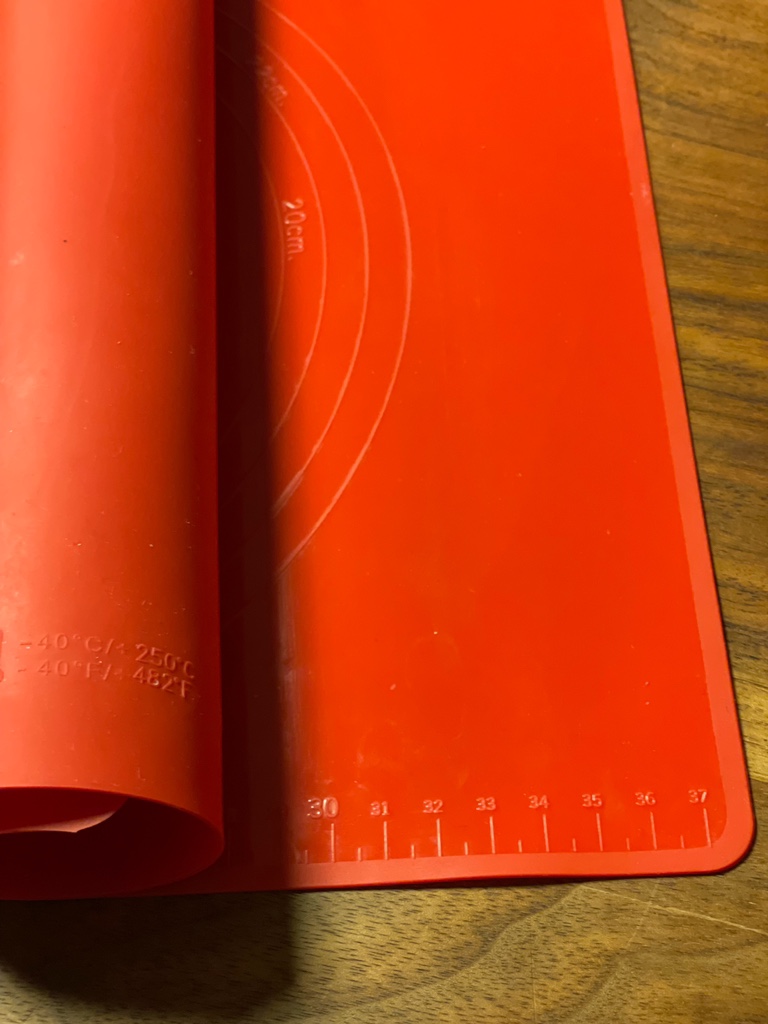
The other baking mat is worth mentioning because it contains fiberglass incorporated in a grid, the most famous manufacturer is called “Silpat”. Supposedly, this addition leads to particularly good heat distribution, which is why this product is used by professionals in the kitchen. Strictly speaking, professionals use only these mats, nothing else. You can clean Silpat mats well, nothing sticks and you may reuse them almost forever (supposedly up to 2,000 times – but we didn’t counted ourselves). If you consider that such a mat costs about 20 euros, it is in the end even much cheaper than any baking paper.
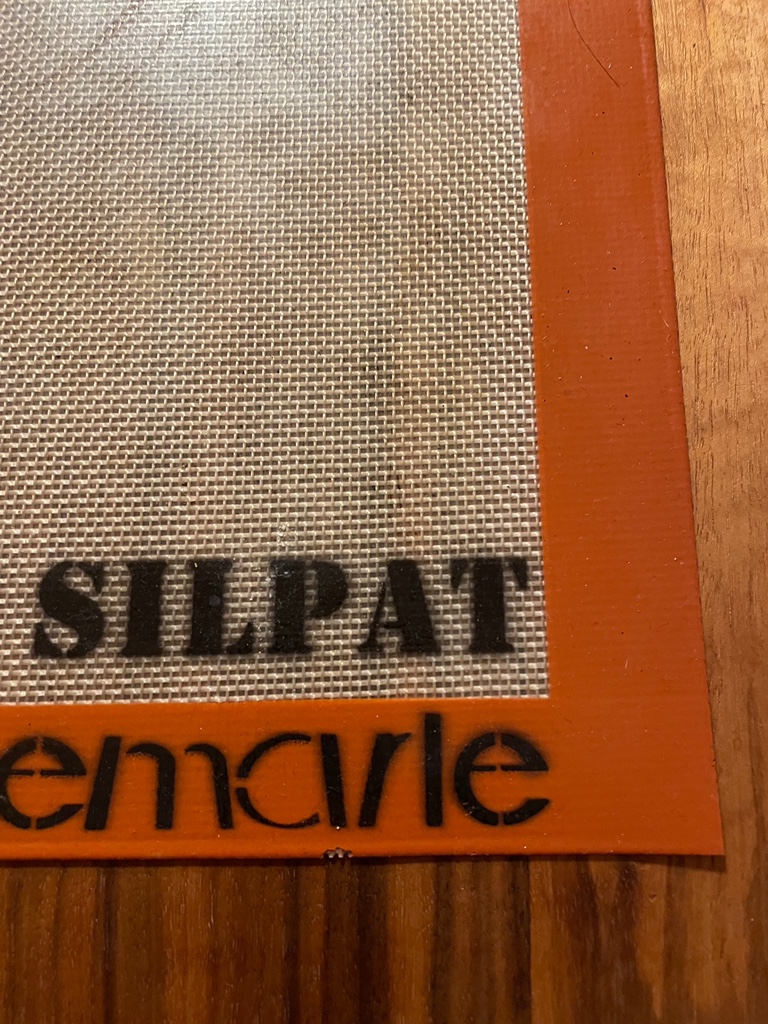
But please keep in mind also with silicone mats: Silicone is and remains an environmental burden, because it is just so resistant and durable.
Therefore, here are a few tips for baking on the tray directly.
Baking tray
Baking trays are supplied with the oven, so they are already included in the price. But there are different designs with advantages and disadvantages.
The best are the models coated with enamel, which is safe for health and lasts a long time. Enamel is cut and scratch resistant. Cleaning is easy, that’s why we prefer such trays as the most sustainable solution. By the way, high-quality trays can also be easily bought separately if you want to have several trays at home (e.g. for preparing larger quantities).
Unfortunately, baking trays with a non-stick coating made of Teflon (the material from space travel that is also often used in pans) are not considered completely harmless to your health. Teflon can – depending on the quality – release harmful fumes at high temperatures and becomes especially dangerous when the coating starts to peel off, because the small particles then end up directly in your food. Also, these baking sheets usually need to be cleaned by hand to avoid damaging the non-stick coating. The dishwasher won’t do the job for you.
Nevertheless, baking directly on the tray has – as we find – charm and clear advantages. Here are a few tips.
Sticking of baked goods can often be prevented quite well by classic greasing of the baking tray with oil alone (without further aids). Oil is particularly suitable or even necessary when grilling oven vegetables or potatoes, for example. If the oil is part of the recipe and preparation anyway, using it also for the try creates no waste or separate effort. Perfect!
For pizza or bread, there is another trick that bakers have also used for centuries. Simply dust the tray with a little flour before putting the pastry on. Don’t use too much and only spread the flour directly under the bread or pizza, otherwise it will burn quickly. In our experience, flour is better than baking paper at preventing a pizza from sticking.
If you do end up with an ultra-crusty tray – very nasty, for example, with sweet and juicy cakes or apple strudel – there are also a few tricks for cleaning that will prevent you from having to excoriate your fingers.
Put the crusty tray on top of the stove tops (yes, all of them), pour as much water on it as you can and let it simmer on low heat for a while. Sounds funny, but it works very well. After a while, even the hardest dark brown caramel crusts can be easily washed off. It could hardly be more ecological.
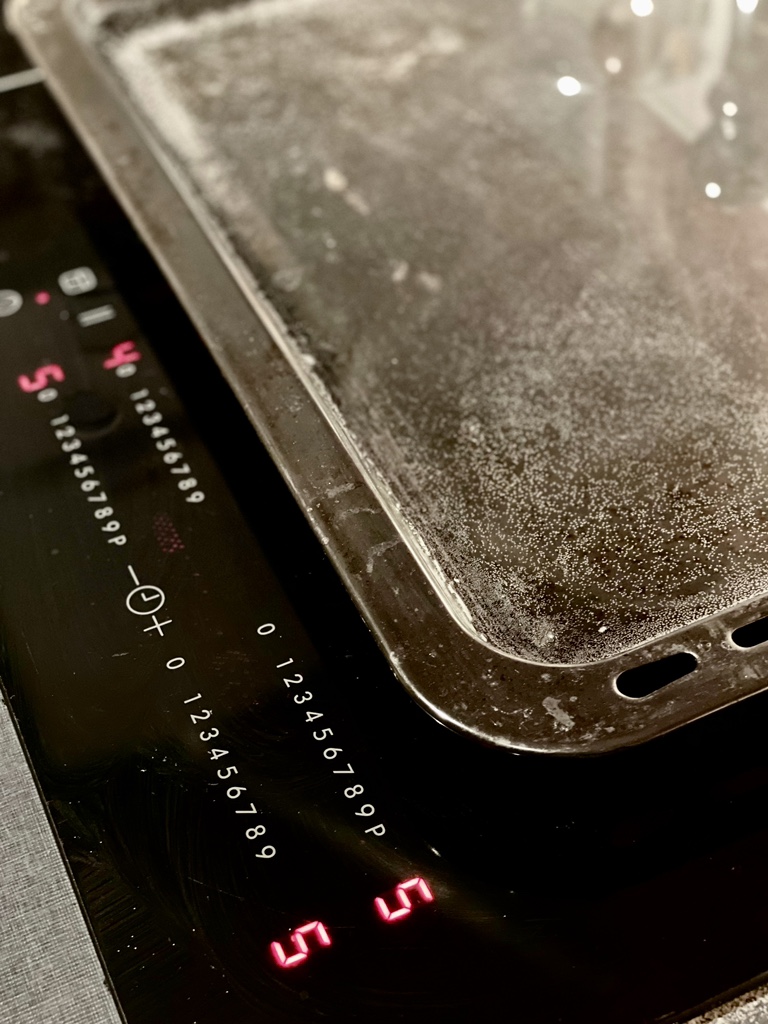
An enamel-coated tray can be cleaned very well with baking soda and hot water, for example.
A scraper, like the one used for ceramic plates, also does a good job of cleaning enameled baking tray. However, please do not use sharp-edged tools on Teflon-coated trays.
Conclusion
Cleaning or not: For ecological and health reasons, always consider first whether you can use the tray directly. Use an enameled baking tray, either greased or floured.
For more difficult cases, buy a good, high-quality, reusable silicone baking mat, such as for delicate pastries and cookies.
In rare cases, you can also use baking paper. You don’t have to use expensive branded products at all. A few splashes of water between the baking sheet and the paper will prevent annoying slipping or curling.
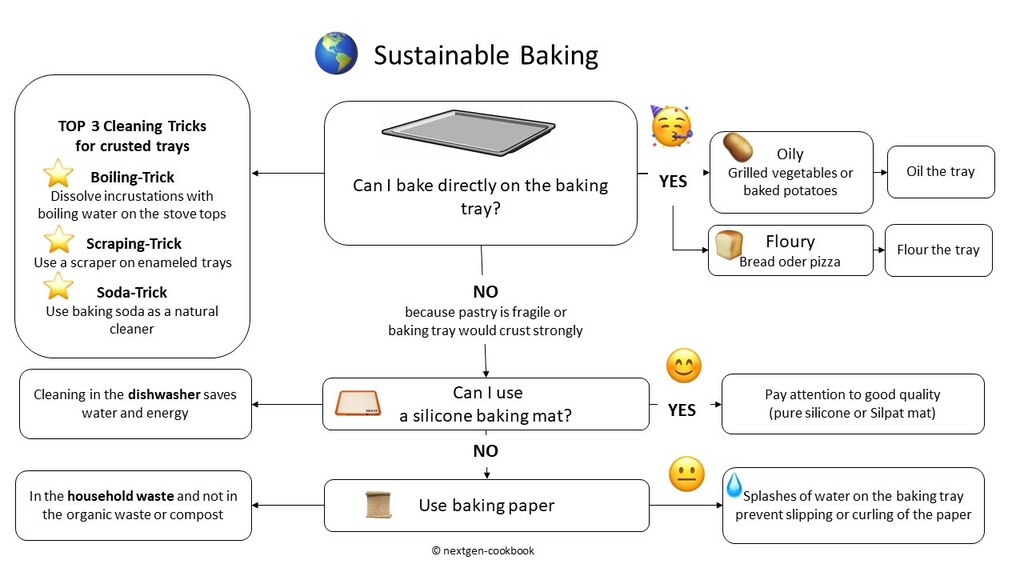

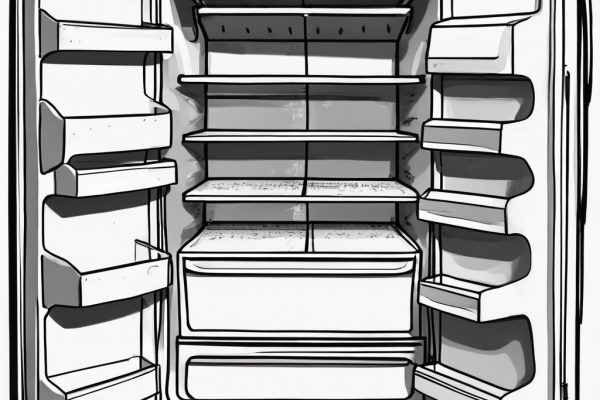
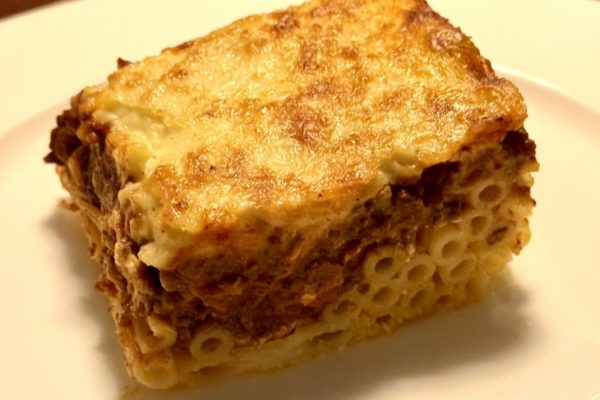

10 thoughts on “Don’t let anything burn”